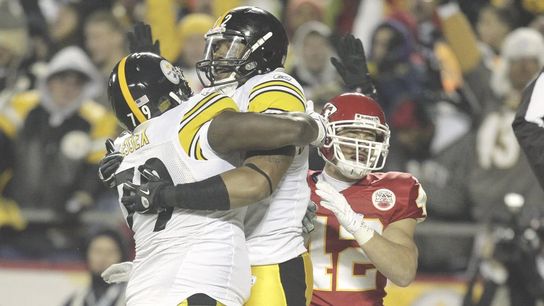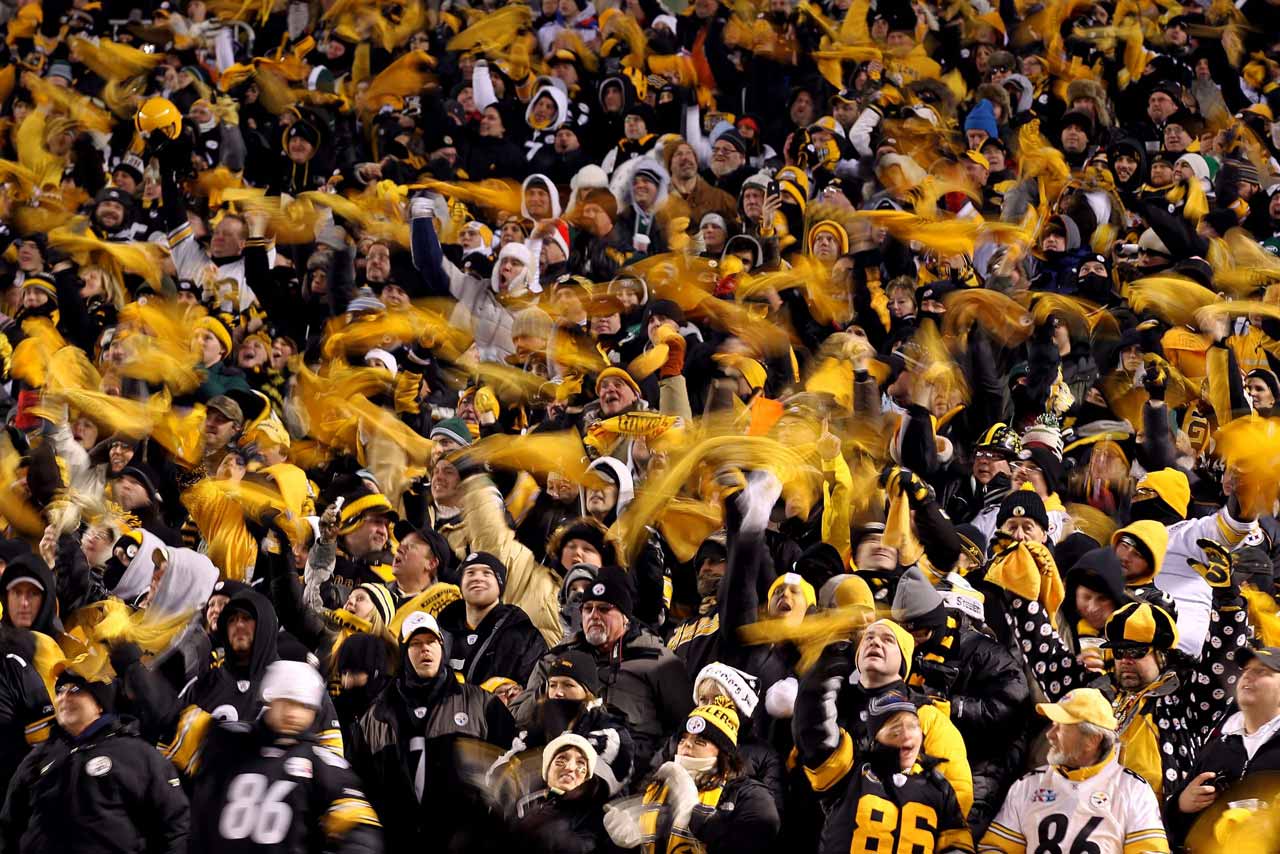Being one of the oldest franchises in football, the Pittsburgh Steelers have seen a lot in the history of the sport. The organization has seen a plethora of rule changes at the hands of their star players. Their Hall of Fame scout, Bill Nunn, reinvented how to scout younger collegiate players looking for a job opportunity at the next level. Nunn’s influence paved the way for smaller school prospects to gain an opportunity to audition for an NFL career. Further, his influence extended the opportunity for prospects who may not have heard their names called in the annual draft.
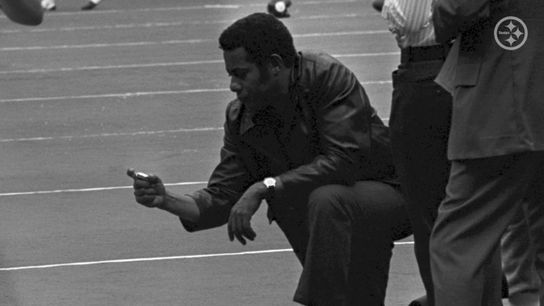
Photo Courtesy of Pittsburgh Steelers/steelers.com
Steelers' Bill Nunn keeps time on a scouting trip.
The Steelers have had to adapt to changes outside of the National Football League as well. The collegiate football landscape has gone through a variety of major changes in the last decade alone. More recently, the NCAA’s new Name, Image, and Likeness (NIL) rule has taken college sports to the next level. For those who may not be privy to the rule, in short, it allows college athletes to be compensated for their name, image, and likeness.
That includes accepting money from boosters, sponsors and other parties in a way to generate sales by using the players’ brand. Needless to say, this has completely changed college sports; but for those players who were disciplined for now outdated violations, they are stuck with the consequences.
The Steelers have seen their fair share of players who earned a spot on the final 53-man roster, but didn’t get called throughout the draft. Those players found a way to inject themselves into the depth chart, do their job and make sure they were in the right place at the right time. There was one former tight end who carries an unheard-of suspension story in college that would eventually unexpectedly land him in Pittsburgh, even though he was slated to be a first-round pick.
Weslye Saunders was a stud in college at the University of South Carolina. He was a four-star recruit coming out of high school and was poised to take college football by storm. He was considered one of the top twenty tight ends in the entire country and one of the best players in the state of North Carolina.
-544x306.jpg)
AP Photo/Mary Ann Chastain
Weslye Saunders (#88) makes a catch against the University of Florida in 2010.
By the time he hit campus in Columbia, South Carolina, his reputation proceeded him and he was an instant contributor to head coach Steve Spurrier’s high-flying offense. Saunders’ success through his first few seasons landed him as one of the top prospects of the 2010 draft. He was ready to declare his eligibility for the draft and get himself ready for the pre-draft process. Spurrier and the NCAA had other plans for Saunders, however.
The Steelers Were Able To Grab Saunders As A Result Of A Now-Outdated Rule Violation
On the Three Point Stance podcast hosted by Kaleb Everhart and Dee Gray, Saunders detailed his experience in the NFL. As a part of the discussion, Saunders revealed that if it wasn’t for a now-outdated violation that resulted in him being suspended for his entire senior season, he wouldn’t have become a member of the Steelers.
“I missed the entire season my senior year for accepting impermissible benefits from boosters and agents as a senior,” Saunders said. “So, I was actually expected to go first round prior to the 2010 season and due to the NCAA investigation, I missed my entire senior year and instead of trying to fight it and come back for an extra year of eligibility, I decided, ‘hey, I didn’t get hurt, I’m still the same player that I was before the season’, and I decided to take my chances in the NFL draft and Nike signed me.”
Saunders also came into the league on the tail-end of recovering from a broken foot. That injury is one that was supposedly the culprit to Saunders’ fall from teams’ big boards, but in fact, that suspension looks to be it. But as Saunders continued to explain, that foot injury was just the icing on his sarcastic proverbial cake.
“I was going to go to the combine and show off my athletic prowess which would get me back into the first or early second round, and I get to Dallas and end up breaking my foot. So, if you could imagine, when it rains it pours, it was kind of that situation. To where I’m also battling off the field issues as well as an injury, so no one foresaw me going undrafted, including myself, but now of course looking back on it, its one of the best things that happened to me from a development standpoint, and of course, to the team I ended up on, because I don’t know if I would’ve ended up on the Steelers, had I not gone through those struggles.”
That NCAA violation Saunders saw remains to be frustrating for him. For Saunders to arguably be at his peak at the college level and ready to be a first-round pick, only to get slapped with a season-long suspension for something that is now legal, has to feel deflating. Listening to Saunders, it is as if he still feels that ‘what if’ fire still burning in him now that those ‘violations’ are now normal in today’s collegiate sports. Saunders considers himself a bit of a pioneer in that regard.
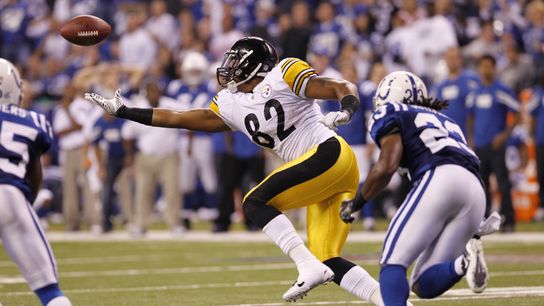
Joe Robbins/Getty Images
Steelers' Weslye Saunders (#82) dives for a pass against the Indianapolis Colts in 2011.
“I consider myself a trailblazer,” Saunders jokingly admitted. “I crawled so the other guys could walk.”
Saunders is just one of many star players who got slapped with sanctions for the current NIL rule. More famously, Reggie Bush won the annual Heisman Trophy in 2005 after an incredibly historic season. However, the NCAA declared his 2005 season was to be erased from the record books after they uncovered Bush having to have received cash, a home and travel expenses as a student. As a result, Bush was forced to forfeit the Heisman award and all of his 2005 statistics and will never see those again.
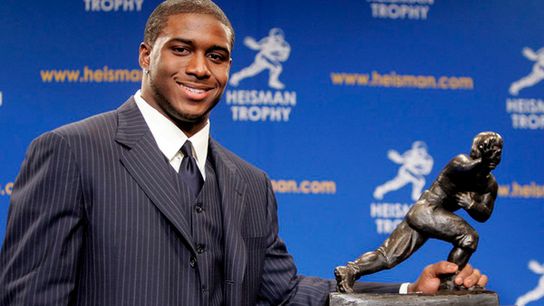
Photo Courtesy Getty Images
Reggie Bush winning the Heisman Trophy in 2005.
Saunders is correct in considering himself to be a trailblazer. But, from an NFL standpoint, it is something the Steelers will need to manage. In Saunders’ case, the rule obliterated his chances of being a top pick in the draft. As a result, Saunders went undrafted and eventually found himself on the same roster as Heath Miller, Antonio Brown and Ben Roethlisberger.
Saunders’ journey to how he got there remains infuriating. The 2010 draft saw two tight ends drafted in the first 50 selections, those being Jermaine Gresham and Rob Gronkowksi. There is no telling where Saunders would have gone. Saunders’ story is one that is becoming annoyingly typical of that generation of players and leaves Steelers fans the wonder of what-if.
Looking at the Steelers’ current tight end duo of pass-catching Pat Freiermuth and blocker Darnell Washington, it looks like what the Steelers could have had over a decade earlier in Miller and Saunders. However, that will remain a mystery.
Have you heard of this story from Saunders? What do you think of the new NIL rule in college? Let us know in the comments below!
#SteelerNation

